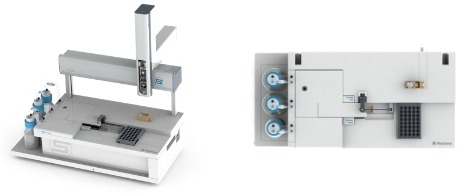As we've noted in a previous blog, sodium caseinate (NaC) is a protein derived from casein (αs1-, αs2-, β-, and κ-casein), the most common protein found in milk. This rheology modifier is widely used in food products due to its foaming, thickening, emulsifying, texture modifying, and nutritional properties. NaC is amphiphilic in nature, allowing it to drive self-assembly into spherical aggregates / micelles with a negative charge and a diameter of ~ 22 nm in aqueous solution under suitable conditions.

The steady-shear viscosity of NaC micellar dispersions can be a useful indicator of how they will behave under shear flows in food product applications. For instance, an increase in concentration of NaC, and corresponding closer packing of micelles, increases the solution’s flow resistance, i.e. viscosity. In addition, using appropriate fitting equations on data of viscosity vs. shear rate or low-shear-rate plateau viscosity vs. concentration can provide a deeper understanding of the micellar and structural characteristics of NaC solutions.
Hindered by instrument limitations, previous studies on NaC samples focused on relatively low shear rates and could not access the shear thinning regime for low concentrations. The VROC® initium one plus and m-VROC® instruments with multiple chip or flow channel options can access shear rates typically not compatible with other viscometers, allowing for more robust protein characterization. In addition, the fully automated VROC® initium one plus allows for a higher throughput and multiple measurements for each NaC concentration.

In our application note, Viscosity of Sodium Caseinate Milk Protein Solutions, we show how we use the VROC® initium one plus in combination with the m-VROC® to access relatively high shear rates and probe the shear thinning and concentration-dependent viscosity of NaC solutions over a wide concentration range. In addition, we analyze the viscosity-shear rate and viscosity-concentration results with the Carreau-Yasuda and generalized Mooney (Ross-Minton) equations, respectively. Our aim is to use our tools to obtain a greater understanding of the structural and rheological properties of NaC dispersions, which are present in the food industry.
Written by: Chrystian Ochoa, PhD, RheoSense Applications Scientist

